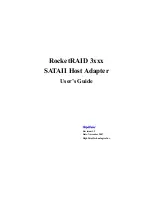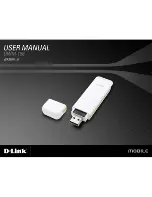
USB-N66 WLAN Adapter User Manual
2
ASUS WLAN adapter
NIC (Network Interface Card)
A network adapter inserted into a computer so that the computer can be
connected to a network. It is responsible for converting data from stored in the
computer to the form transmitted or received.
Packet
A basic message unit for communication across a network. A packet usually
includes routing information, data, and sometimes error detection information.
Pass Phrase
The Wireless Settings utility uses an algorithm to generate four WEP keys based
on the typed combination.
PCMCIA (Personal Computer Memory Card International
Association)
The Personal Computer Memory Card International Association (PCMCIA),
develops standards for PC cards, formerly known as PCMCIA cards. These
cards are available in three types, and are about the same length and width as
credit cards. However, the different width of the cards ranges in thickness from
3.3 mm (Type I) to 5.0 mm (Type II) to 10.5 mm (Type III). These cards can be
used for various functions, including memory storage, land line modems and
wireless modems.
PPP (Point-to-Point Protocol)
PPP is a protocol for communication between computers using a serial
interface, typically a personal computer connected by phone line to a server.
PPPoE (Point-to-Point Protocol over Ethernet)
Point-to-Point Protocol is a method of secure data transmission. PPP using
Ethernet to connect to an ISP.
Preamble
Allows you to set the preamble mode for a network to Long, Short, or Auto. The
default preamble mode is Long.
Radio Frequency (RF) Terms: GHz, MHz, Hz
The international unit for measuring frequency is Hertz (Hz), equivalent to the
older unit of cycles per second. One megahertz (MHz) is one million Hertz.
One gigahertz (GHz) is one billion Hertz. The standard US electrical power
frequency is 60Hz, the AM broadcast radio frequency band is 0.55-1.6MHz, the
FM broadcast radio frequency band is 88-108MHz, and wireless 802.11 LANs
operate at 2.4GHz.









































